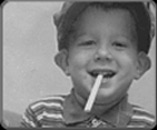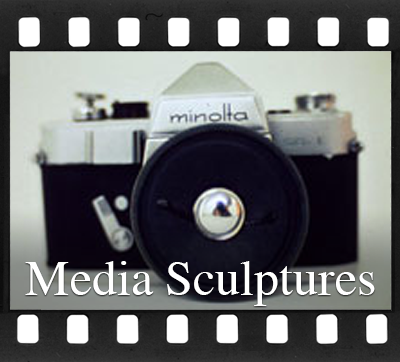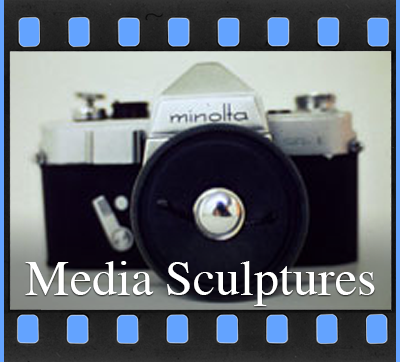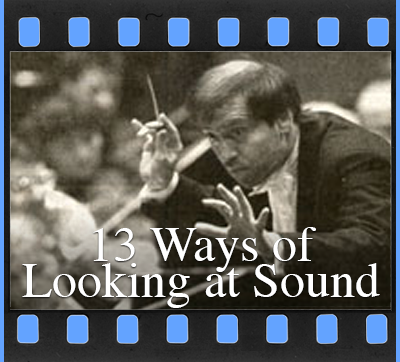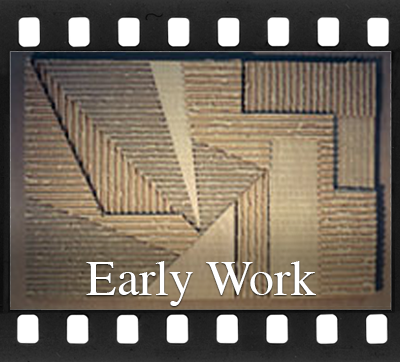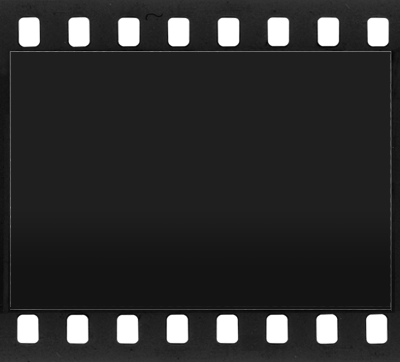13 Ways Production Notes
September 10, 2003
I guess you could call me an information junkie. For more than 25 years now, I’ve been collecting my own personal archive of sounds and images on film, video, audiotape and digital media. I have hours and hours of old newsreels and home movies, shelves filled with old anonymous family photographs and photo albums, hundreds of old Life magazines, thousands of found 35mm transparencies, and tens of thousands of images that I‘ve cut out from the newspaper over the years.
My fascination with newspaper images in particular began back in 1980 when I started a project that required me to cut out every photograph every day from The New York Times for the entire year. 23 years later -- though I’ve become much more selective in the images I choose -- I’m still cutting out photographs from the newspaper, still seduced and still repulsed by the infinite collage of faces, places and curiosities that tell the visual history of our time.
My collection of newspaper photographs has now been sorted into more than 350 separate categories. Some of my favorites include images of “People Looking Through Binoculars,” “People Reading Newspapers,” and “Images of Outer Space” (which, by the way, got a lot more interesting once they started printing them in color). I have a special fascination with images of Boats Sinking, Cars Crashing and Train Wrecks, not to mention images of Protest Marches and Acts of Civil Disobedience.
I have categories called “Bullet Holes,” “Open Caskets,” “Self Immolation,” -- and until recently, had one called, “Men with Masks” – which grew large enough to split into two separate categories – one called “Gas Masks” – the other “Masks of Militancy.” At one point I had a category called “Men With Guns,” but circumstance around the world have led me to add two new categories: “Women With Guns” and “Children With Guns.” And I’m sad to say there have been enough terrorist bombings in the world to justify a category I call, “Twisted Metal.”
One of the largest categories is simply called “Dead Bodies.” After 20 years of cutting images from the newspaper, it’s shocking to realize just how many images of death fill the pages of our newspapers – and just how normal it all seems. I had so many images of dead bodies that I had to divide them into three categories: one for single dead bodies, one for multiple dead bodies and one for mass graves.
On a lighter note, I’ve always been fascinated with images that somehow suggest the presence of “sound.” Those categories include images of people listening to radios, talking into microphones, wearing headphones; images of politicians giving speeches and press conferences and the audiences that listen to, cheer -- or jeer them. I’m always on the lookout for images of music and musicians – whether on the street, in the concert hall, or in the neighborhood pub. Of course when you think about it, there’s a soundtrack contained or implied by every photograph ever taken.
Take this image of a Russian soldier playing the piano inside a park in Grozny, the ruined capital of the secessionist Chechen republic. Would you file it under music? Under “Soldiers?” Under “War?” Under “Russia?” Under “Wars of Liberation?” Maybe I should create a new category called ‘The Music of War? I keep wondering what kind of music he’s playing. Maybe Bach. Or Tchaichovsky? Maybe he’s not playing any music at all. Maybe he’s just banging at the keys. In anger.
I also have a rather large collection of sounds. Some of my favorite sounds include, “elephant trumpets,” “the sound a camel makes when it struggles to its feet after resting on the desert sand” or “the sound of a large flock of birds as it passes overhead.” I’ve always been partial to the textures of sounds like flags flapping, rope creaking or the squeaking of doors as they open and close. I also collect doorbells ringing, car honks and rhythmic “ticking” sounds -- that is to say, any sound that suggests the passage of time.
I’m also especially interested in something called “Interior Presence” – in particular, what film and radio sound editors call “room tone.” Whether it’s the hum of fluorescent lights, or the faint but distinct high pitch tone emanating from an old refrigerator in the room next door, every room has its own kind of quiet when there’s no one and nothing in it -- except someone with a microphone and a recording device. I love the challenge of trying to find words that best describe the unique sound – “of the silence” of empty interior spaces.
I still can’t help myself when I find a piece of stray audiotape on the side of the highway, tangled up in a bush or dangling from a tree branch. To this day I’ve never understood how those pieces of orphaned audiotape got there. What happened to the audiocassettes or reels they originally came from? And where is the rest of the tape?
By the time I get it home, the piece of audiotape is usually so mangled that it’s impossible to play it on a tape recorder to hear what it is – or was. I keep hoping I’ll strike gold one day though. Maybe I’ll find a piece of tape that will solve a crime or lead me towards some mysterious discovery. Most of the time it’s usually just bad rock and roll.
There’s one sound I’ve always wanted to record, except it would mean putting a microphone inside my skull. Sometimes when my head hits the pillow at night, I’m overwhelmed by the non-stop percussive rhythms my own heartbeat. It feels – or rather it sounds -- as if an audio speaker has been placed just outside my ear, pulsing a rhythmic downbeat through my veins – and using my skull as a sounding board. Bumpump. Bumpump. Bumpump.
I think of it as my own inner drum, but it’s most likely a sign of high blood pressure, and I probably should go to see a doctor. Since I can’t sleep because of all the noise anyway, sometimes I hum or sing or tap my fingers in a duet with the sounds of my own nervous energy.
And speaking of drumming… I remember reading a story in the newspaper about ten years ago about a drought in Idaho. The lack of water made the trees so weak that it brought an infestation of insects, which feed on the dead trees. Which naturally, brought in lots of birds to feed on the insects -- especially woodpeckers. In droves. And so small towns all over central Idaho were treated to the non-stop sounds of woodpeckers drilling and pecking. Drilling holes for nests. And pecking for insects. All day. A drumming festival that drove the local people crazy until it finally started to rain once again.
- ◻ 13 Ways of Looking at Sound
- ✓ Production Notes
- ◻ The Transom Review
